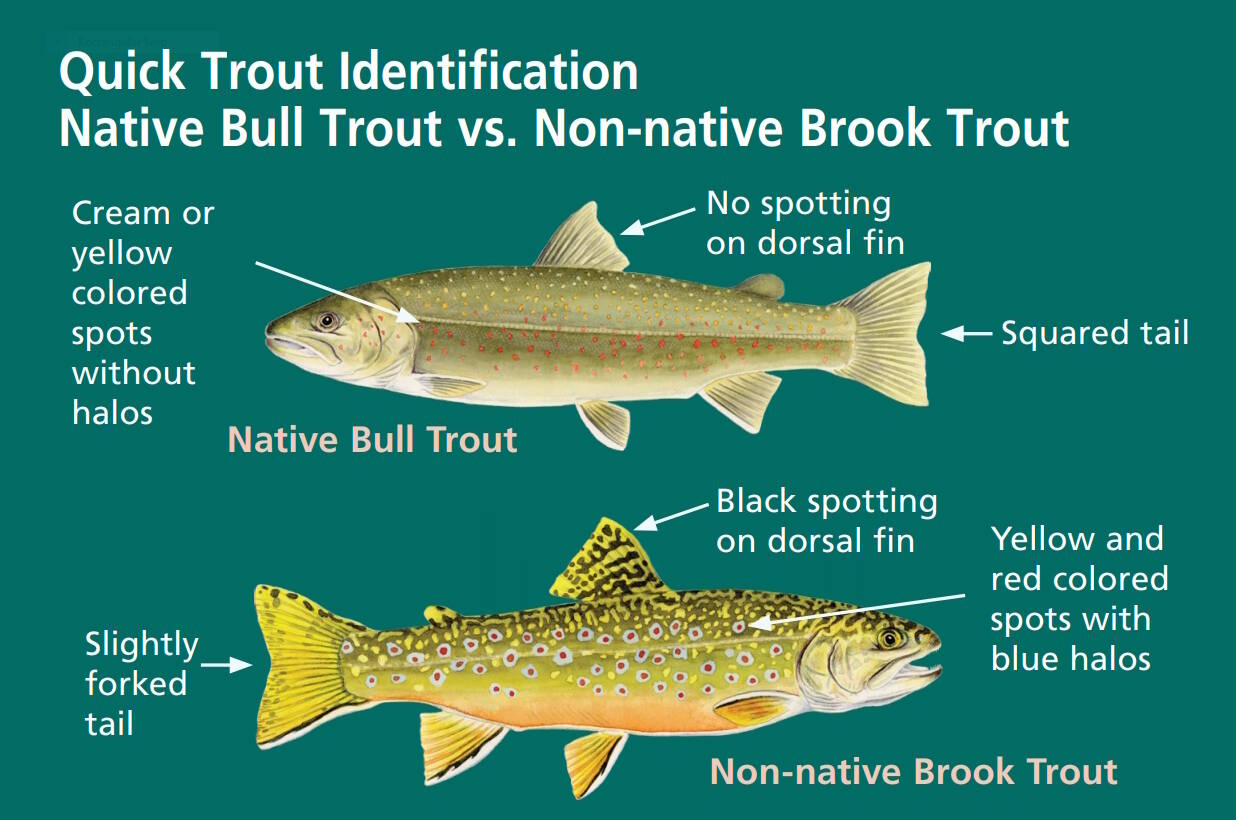The National Park Service will remove restrictions on taking some fish at Mount Rainier that should both help native fish get a leg up and give anglers a chance to catch more non-native fish.
The new rule, announced Jan. 20, removes closures at the Ohanapecosh River (except for artificial flyfishing) and Ipsut Creek. It also removes a restriction that limited daily catch and possession to six pounds and one fish, not to exceed 12 fish.
These rules changes take effect Feb. 21. They’ll help implement a 2018 fish management plan for the park that aims to conserve native fish populations and reduce or eliminate nonnative fish, according to the NPS.
Early in the park’s history, the NPS and other agencies stocked nonnative fish around fishless lakes at the mountain to enhance recreational fishing. But those fish also started reproducing in rivers and streams where they compete with native fish, according to the NPS, and more unauthorized introduction of nonnative species has occurred since that stocking ended.
The result is populations of reproducing nonnative fish across all of the park’s watersheds, which can harm the quality of river habitat. Nonnative fish prey on and compete with native fish, and that has a knock-on effect on other organisms in the water that are used to the delicate, pre-existing circle of life in those waters.
“The NPS expects the eradication or suppression of nonnative fish to result in the increased survival and abundance of threatened and endangered species (bull trout, chinook salmon and steelhead) and improved habitat for native species,” according to the federal register.
So the park wants to reduce the number of nonnative fish like Eastern Brook Trout and Kokanee Salmon — including opening up options for anglers to sink their hooks into them.
Know the rules for fishing at the mountain before you head out. According to National Parks Service chief of interpretation, education and volunteers Terry Wildy:
Anglers may take an unlimited amount of nonnative fish at MRNP’s mountain lakes (except for those closed to fishing).
Anglers may take an unlimited amount of nonnative brook trout and kokanee salmon at MRNP’s rivers and streams (except those closed to fishing.)
Why the difference? “Mountain lakes should not have any fish species, period,” Wildy said, even including native fish, which have no way to get their on their own. Otherwise, because it’s too difficult to distinguish between most native and nonnative fish, only brook trout and kokanee salmon are easy to distinguish enough that their take can be allowed. All other fish species are catch-and-release.
Visit https://www.nps.gov/mora/planyourvisit/upload/MORA-FISH-2020-Brochure-04_2020_508v2.pdf for a visual guide to identifying native and nonnative fish at the park.
Keep in mind that Tipsoo, Shadow, Reflection, Frozen and Ghost Lakes are closed to all fishing, largely in order to protect fragile riparian vegetation.
The rule changes also simplify the way that fishing regulations will be posted at the park in the future. Previously, fishing regulations were posted in the Code of Federal Regulations. Going forward, the NPS will publish fishing closures and restrictions on the park’s website. You can find them at: https://www.nps.gov/mora/planyourvisit/fishing-and-boating.htm, or on the Superintendent’s Compendium.


